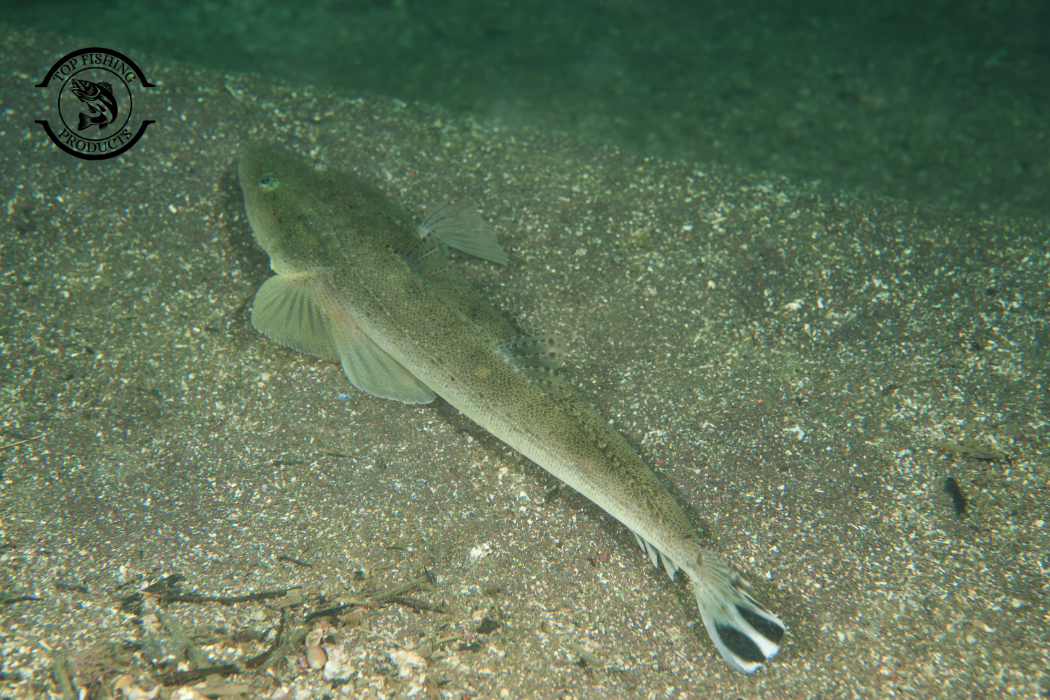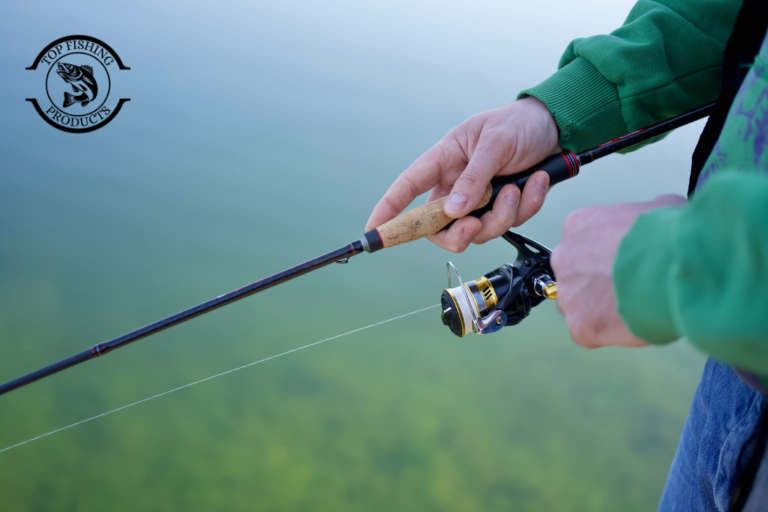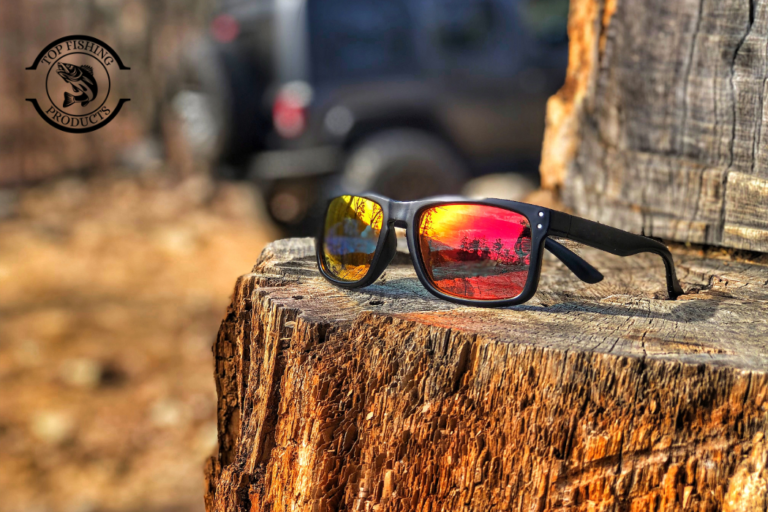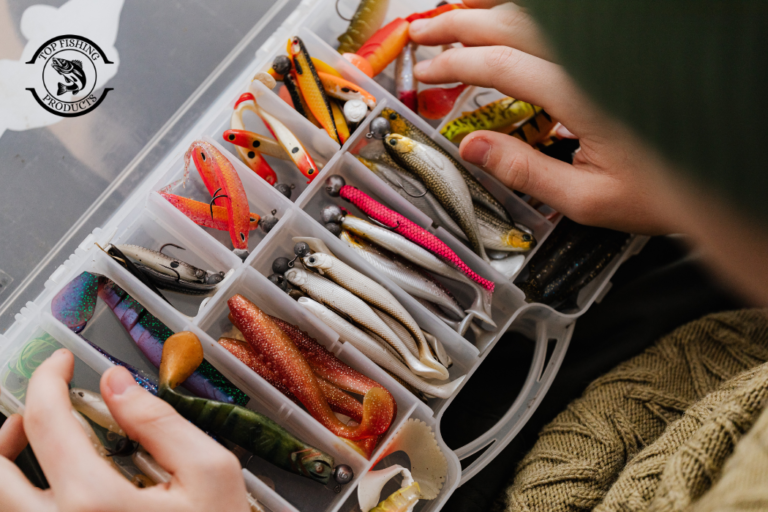Many fishermen often ask, “How to Catch Flathead Fish?”, since this hobby is popular around lakes, rivers, and beaches where the species is well-established. Flatheads are admired for their aggressive strikes, unique shape, and excellent flavor. Expert fishermen enjoy the challenge of catching larger ones, while beginners prefer them because they are easy to target.
For anyone wondering how to catch flathead fish, having the right equipment, patience, and knowledge is all necessary. We cover everything you need to know here, from how to choose bait and where to discover the ideal places to strategies that will help you successfully pull in flathead. Let’s look at it:
Understanding Flathead Fish
Fish that live on the bottom, flatheads are generally found in muddy or sandy environments where they may cover themselves. Because of their flat body, they can fit in with the seafloor while keeping an eye out for possible victims. As bait feeders, flatheads stay still and attack food as it gets closer.
Because they favor waterways, river mouths, and coastal areas, flathead are suitable targets from both land and water. Understanding that they like to stay at the bottom is the first step in catching them. Gaining knowledge of their habits and behavior gives you a significant edge as a fisherman who asks, are flatheads easy to catch?
Where Flathead Are Found
Sandy beaches, bays, tidal rivers, and rivers are typical areas for flatheads. Because food is carried by the water past them, they love places where there is wave motion. Their favorite spots to ambush small fish, prawns, or crabs include sandbanks, drop-offs, and channels. When baitfish are hidden in weed beds or other places, flathead tend to remain nearby.
They move toward the beach when the tide is in and toward deeper water when it is out. Since flathead are most active and easier to target close to the shore with rising tides, beginners should search for shallow flats during this time if they want to know where to catch flathead.
Why Flathead Are Great for Beginners
Since they are readily accessible, easy to catch, and delicious to eat, flathead are perfect for beginning fishermen. Unlike certain fish that require special equipment or bottom fishing, flathead can be caught from a boat, the shore, or even the shallows when wading. Their difficult bites make for an exciting encounter, and because they are so common.
Beginners have many chances to practice. They provide beginners with the chance to try things out because they react to both bait and lures. Flathead offers the ideal balance of adventure and challenge for beginners who are just starting in fishing.
Best Time to Catch Flathead
When fishing for flathead, timing is everything. Certain periods of the day and wave cycles are when they are active. Early morning and late afternoon are the best periods, especially when the storms are coming in. Baitfish are pushed into shallow water when the tide rises, and flathead are not far behind.
Since flathead sit at channel margins to catch bait carried toward them, most anglers also have success during the start of the outgoing tide. The warmer months usually bring more action, although they can be caught all year round. Many beginners ask, what’s the best time to catch flathead? In addition to improving your chances of surviving, traveling at the right time guarantees that your journeys will be more pleasurable.
Flathead can also be caught at night, although most fishermen only fish during the day. In fact, when they venture into shallower water to feed with more confidence, some of the largest flatheads are caught after sunset. Use vibrating lures or live bait to attract them in low light.
The bites are more noticeable if you have a glow stick or headlamp on the tip of your rod. It can also be great to fish at night close to lights, bridges, or areas where baitfish found. Beginners may find night fishing a little more challenging, but there are exciting opportunities to catch bigger fish.
Important Guide for Catching Flathead
From selections of rods to reel, basic to advance guide about fishing every detail is given below. Let’s check:
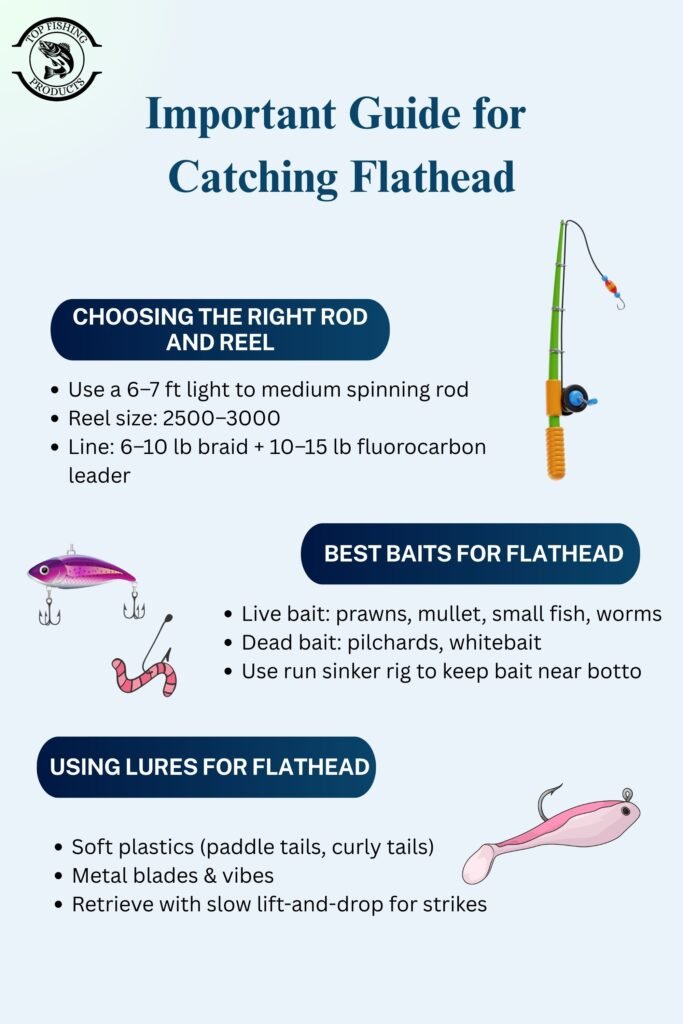
1. Choosing the Right Rod and Reel
You don’t want to use the heaviest equipment while flathead fishing, but you do want something strong enough to deal with their powerful attacks. The ideal length for a spinning rod is 6–7 feet, light to medium. For balance, combine it with a spinning reel that is between 2500 and 3000 in size.
A fluorocarbon leader of 10 to 15 pounds prevents damage from their sharp teeth, while a braided line of 6 to 10 pounds offers decent throwing distance and feel. Equipment that is lightweight, adaptable, and easy to handle is ideal for beginners. The right rod and reel combination increases your chances of success and makes fishing easier.
2. Best Baits for Flathead
Due to their high level of aggression, flathead fish respond favorably to both live and dead bait. Some excellent natural baits are mullet, small baitfish, worms, and live prawns. Because of their natural capacity to swim, flathead are drawn to attack them. If presented properly, pilchards and whitebait can also be used as dead baits.
Since flathead rarely rise to seek food, it is always best to go close to the bottom when using bait. Because it keeps the bait near the sand or mud, a run sinker rig is effective. Although live baits typically perform best, the choice of bait will rely on what is available locally. Many people often ask, what is the best bait for flathead?
3. Using Lures for Flathead
Due to their aggressive attack on anything moving, flathead fishermen have a strong preference for lure fishing. The most common lures are made of soft plastic, especially paddle tails and curly tails that look like small fish or prawns. Metal blades, vibes, and hard-bodied baits will also be successfully recovered from the bottom.
Because flatheads ambush their prey in the sand or mud, the trick is to keep the bait moving in that area. Strikes are typically produced with a slow lift-and-drop recovery. Because they are affordable and efficient, soft plastics are a fantastic place for beginners to start. Lure fishing may become thrilling and profitable with practice and different flathead fishing techniques.
What to Do in Flathead Fishing
Some essential experienced tips that will help you to understand how to deal while fishing. Check the tips, read carefully. If you don’t understand then read it again. Let’s go:
1. Shore Fishing for Flathead
One of the easiest techniques for beginner fishermen is shore fishing for flathead. Good locations include patches next to sand flats, tidal banks, and sandy beaches. Good catches might result from casting hooks or bait into drop-offs and channels. When flathead are close to shore, they rise or fall in line with the tides because they follow the tide.
You can also go to deeper places where they hide by wading into shallow water. Because shore fishing requires movement and a good casting range, light gear is perfect. Shore fishing may be very profitable if you have the right location and patience, making it useful for anyone learning how to catch flathead from shore.
2. Boat Fishing for Flathead
You may reach deeper channels, sandbanks, and drop-offs where flathead often gather by boat fishing. Since your bait or lure naturally covers a large area, drifting is a particularly effective approach. Your bait floats over waiting flathead since the boat is moving with the water, giving you additional chances to hit.
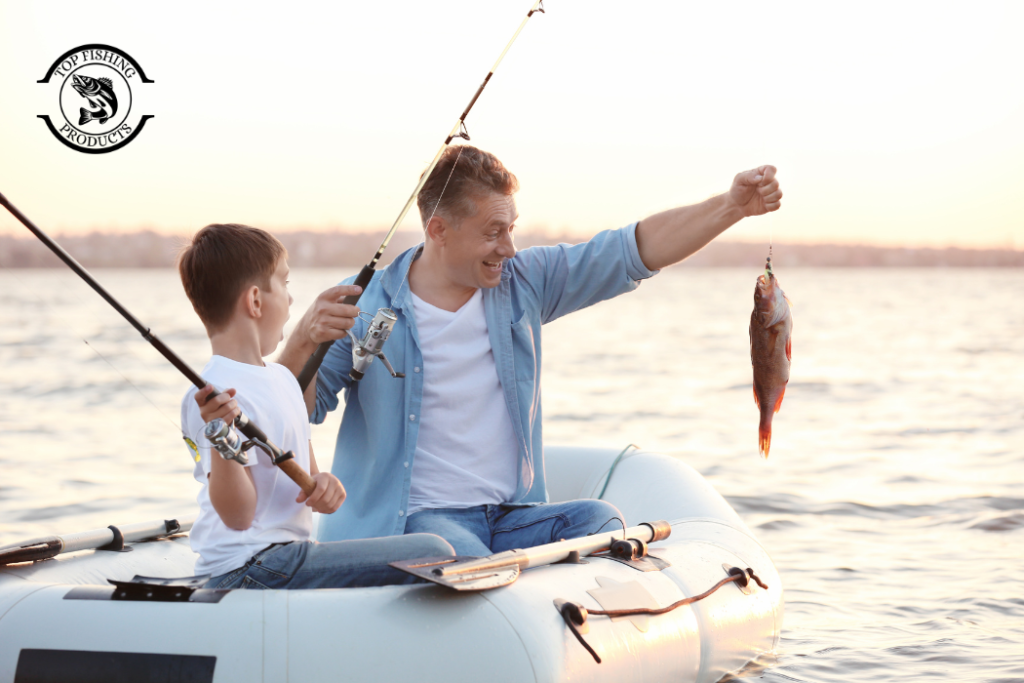
If you know where the flathead is feeding, you can also drift over a good location. Boats allow you to go farther, but you still need to be aware of where these fish settle on the bottom. Fishing from a boat offers dependability and flexibility.
3. Seasonal Patterns for Flathead Fishing
While flathead can be caught year-round, their behavior varies with the season. During warmer months, they move more freely and go into shallow areas in search of baitfish and prawns. Because fish are easier to find in estuaries and flats, summer and spring are therefore the best seasons for beginners.
In colder months, flathead may retreat into deeper rivers and lakes, so a boat may be necessary to reach them. In the winter, they still bite, but not as much. You will be more successful overall and be able to plan trips more effectively if you understand how flathead respond to seasonal variations.
4. Using Waders for Flathead Fishing
Wading is a very good method of catching flathead, especially in rivers and shallow tidal flats. Waders allow you to cast into regions that are otherwise inaccessible from the beach and get into the water. Wading gives you a better angle to display your baits or lures against the bottom, which is where flatheads usually hide.
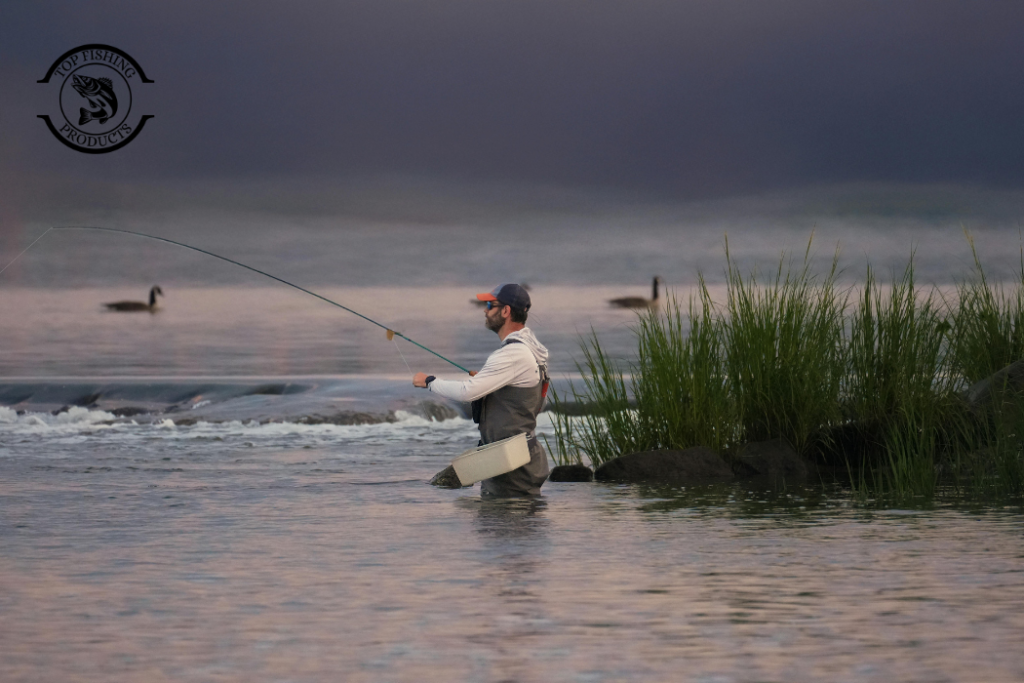
Additionally, wading allows you to quietly approach and sneak up on fish. Beginners should always choose shallow, safe locations and be careful to check the tides before wading. Wade-fishing with waders can improve your chances and make flathead fishing even more enjoyable if you take the right security precautions.
5. Catch and Release Practices
Some fishermen choose to release flathead, especially larger breeding females, even though they are a popular eating fish. Fish populations are kept healthy for future generations through catch and release. Avoid keeping flathead out of water for long periods of time, and handle them gently if you want to release them.
To reduce stress and damage, wet your hands before handling and using a landing net. Unhooking will be easier using circle hooks or barbless hooks. Releasing fish back into the water should always be done carefully. Anglers can ensure the survival of flathead for future generations by showing care for the fish and its habitat.
6. Hook and Land Flathead
Hooking a flathead requires patience and proper technique. When you feel a bite, avoid striking too hard immediately. Flathead often grab the bait first before fully swallowing it. Give them a second before setting the hook with a firm lift of your rod.
Once hooked, flathead fight strongly and may thrash on the surface. Keep steady pressure on the line and avoid giving them slack. When bringing them in, use a landing net to avoid losing the fish near the shore or boat. Flathead have sharp spines, so handle them carefully with pliers to remove hooks safely.
7. Cleaning and Cooking Flathead
It takes skill and care to hook a flathead. Do not strike too hard at once when you feel a bite. Initially grabbing the bait, flathead often swallow it whole. Give them a moment, then hook them with the powerful lift of your rod. Flatheads can splash around on the surface and struggle a lot when hooked.
Don’t allow them any space instead, keep the line under constant pressure. To avoid losing the fish near the boat or shore, use a landing net when landing them. To properly remove hooks from flatheads, use pliers to handle them carefully because their spines are sharp.
8. Best Rigs for Flathead Fishing
When flathead fishing, choosing the right rig is important. The running sinker rig is the most often used and effective setup because it allows your bait to drift naturally down the bottom where flathead are waiting. This rig uses an abrasive hook, a leader, and a hook that goes over a twist.
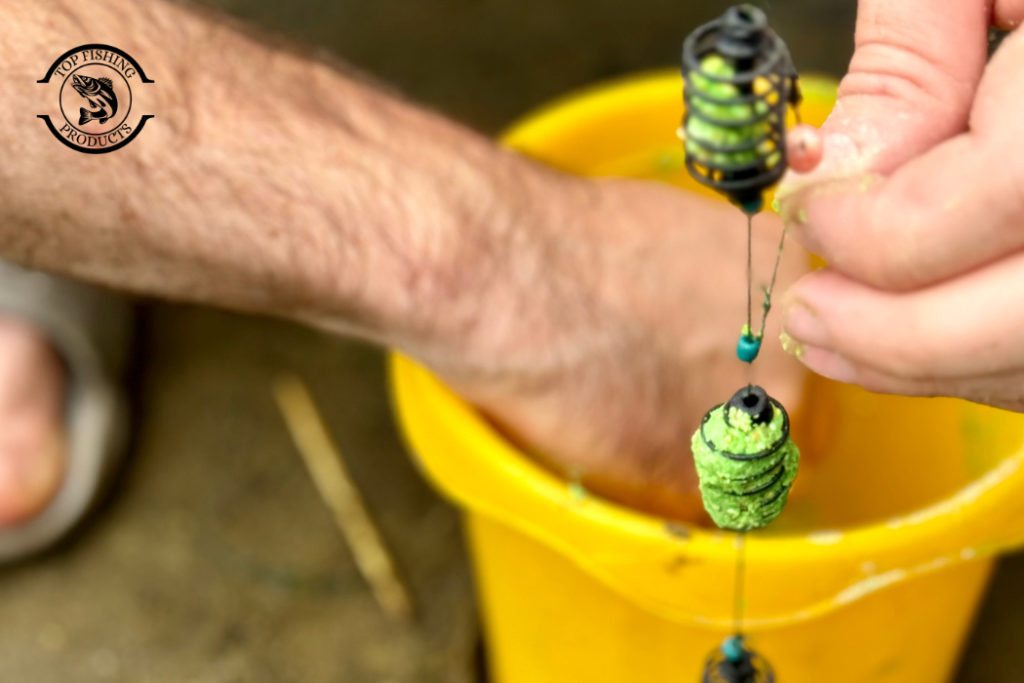
Both live and dead bait can be used with it. Soft plastic jig heads are the most popular choice for lure fishing since they display the bait close to the sand. Since flatheads aren’t picky and clean presentations attract a lot of fish, beginners shouldn’t complicate their setups.
9. Tides and Water Conditions
When it comes to flathead fishing, tides play a big role. Flatheads rely on tide movements to deliver food to them as ambushers. Fishing from the shore is ideal during incoming tides because tidal movements attract baitfish to shallow flats. Flathead set up in the deeper channels where bait is directed by outgoing tides.
The water’s clarity affects your chances as well. Because they feel more confident while biting, flatheads bite more effectively in somewhat dirty water. Water that is too clear could make them nervous, while highly polluted water could make it harder to see. You can better plan your trips if you are aware of the tides and water conditions.
Fishing with Kids for Flathead
When fishing with kids, flathead are a fantastic target because they are common, easy to catch, and exciting to bring home. Because they live in deep waters, children can often catch them from the beach, and their strong jaws and fighting skills keep kids interested.
The easiest approach to get kids interested in fishing is usually with simple setups and live bait. Using light tackle that they can manage easily is the best option. Flathead fishing is a fantastic family sport that creates long-lasting memories while teaching young fishermen patience, safety, and respect for the environment.
Common Mistakes Beginners Make
When fishing for flathead, the majority of beginners make simple mistakes. Attempting to fish too high in the water column is a common mistake. Your bait or lure should always be placed near the sand because flathead are bottom feeders. Hooking too soon after they bite is another mistake. A higher hook-up rate can be achieved by waiting a few seconds.
Additionally, beginners forget to verify the tide periods, which can result in journeys that are unsuccessful. Another issue is using too-heavy tackle, which reduces casting distance and distracts from the enjoyment of fishing. Avoiding these mistakes improves flathead fishing fun and success.
Final Thoughts
Whether you are just beginning or an experienced fisherman, learning how to catch flathead fish can be both rewarding and enjoyable. You’ll increase your chances of success by knowing where they live, how tides affect them, and what bait or hooks work best. While it doesn’t need the heaviest gear, flathead fishing does call for patience and awareness of conditions.
Flathead may be landed from boats, estuaries, or the beach with the right methods. They are among the best all-around fish for anglers because they are delicious to eat and amazing to catch.
Frequently Asked Questions:
What is the best bait for flathead?
Live prawns, yabbies, and small baitfish are the most effective baits for flathead, though dead bait like pilchards also works.
Can you catch flathead with lures?
Yes, soft plastic lures and hard-bodied lures are very effective, especially when retrieved close to the bottom.
What size rod is best for flathead?
A 6–7-foot light to medium spinning rod paired with a 2500–3000 size reel works perfectly for flathead fishing.
Do tides matter when catching flathead?
Yes, incoming and outgoing tides are the best times to fish for flathead, as these tides move baitfish into their feeding zones.
Is flathead good to eat?
Flathead are highly regarded for their sweet, white flesh and are delicious when fried, grilled, or baked.


